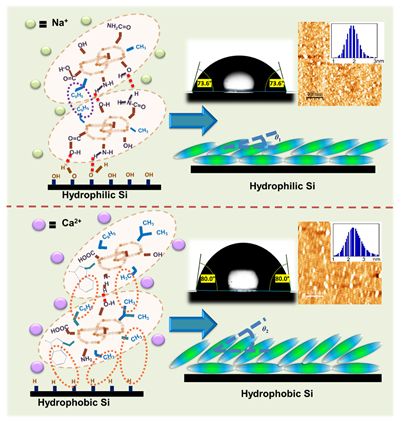Ministry of Science & Technology

Fabrication of lysozyme bilayers in presence of ions can mimic biological protein absortion on inserted implants
Posted On: 30 DEC 2024 5:06PM by PIB Delhi
A research group stabilized bilayers of lysozyme protein molecules on hydrophilic and hydrophobic silicon surface from solution at room temperature to imitate the actual protein adsorption in living organisms. This will help in mimicking the real biological processes of ion-mediated protein adsorptions on inserted implants and biomaterials.
Lysozyme is a model protein that has four disulfide bonds and is found in human tears, sweat, milk, and saliva. On the other hand, ions are an integral part of the living body and are involved in multiple biological processes such as regulation of electrochemical potential, fluid-electrolyte equilibrium, extra-cellular acid-base equilibrium, muscle contraction and so on.
In this context, the introduction of implants inside a living body would undoubtedly lead to ion-mediated protein-surface interactions.
A group of scientists from Institute of Advanced Study in Science and Technology (IASST), Guwahati, an autonomous institute of North-East India under the Department of Science and Technology (DST), carried out fabrication of lysozyme bilayers in the presence of ions. It has led to ion-mediated lysozyme adsorption that can mimic the biological adsorption of proteins in a real living body.
The lysozyme bilayer was stabilised in the presence of mono-(Na+), di-(Ca2+) and trivalent (Y3+) ions consisting of a bottom layer embedded with lysozyme molecules favouring side-on orientation and an additional upper layer of molecules favouring the side-on or tilted orientation.
The reserachers have explained the mechanism of stabilization of bilayers of lysozyme on Si surface controlled via different ions interactions.
According to the group led by Dr. Sarathi Kundu, Associate Professor, along with Mr. Sanu Sarkar, a Senior Research Fellow, and Dr. Aditi Saikia, a post-doctorate fellow, the entire immobilization process of lysozyme bilayer on Si surfaces from the dissolved ions interacting with lysozyme molecules was realized primarily via modified hydrogen bonding, hydrophobic and electrostatic interactions in an ionic atmosphere.
The lysozyme-lysozyme interaction competing with the lysozyme-surface interaction in the ionic atmosphere leads to protein adsorption in its native globular form on the hydrophilic surface and with a little elongated structure on the hydrophobic surface. Bilayer film populated with more lysozyme molecules gives rise to a higher contact angle.
The stabilization of lysozyme bilayers by ions at room temperature will turn out to be helpful in mimicking the real biological processes of ion-mediated protein adsorptions on inserted implants and biomaterials. This research work was published in the New Journal of Chemistry under the reputed Royal Society of Chemistry.

***
NKR/KS
(Release ID: 2088886) Visitor Counter : 170























